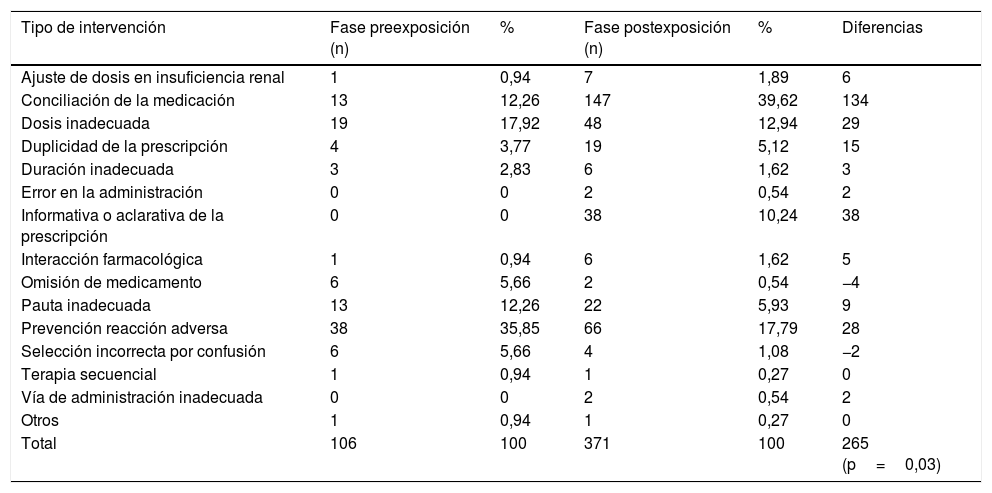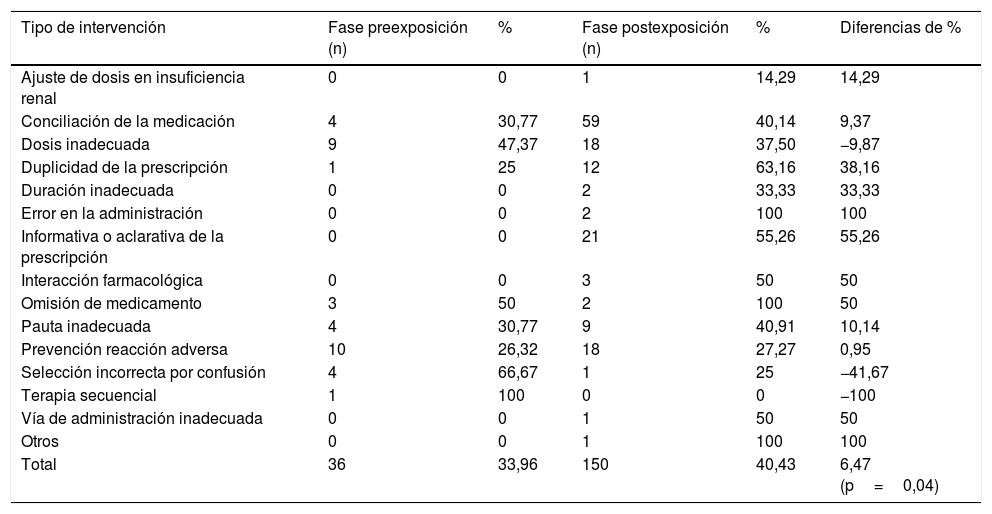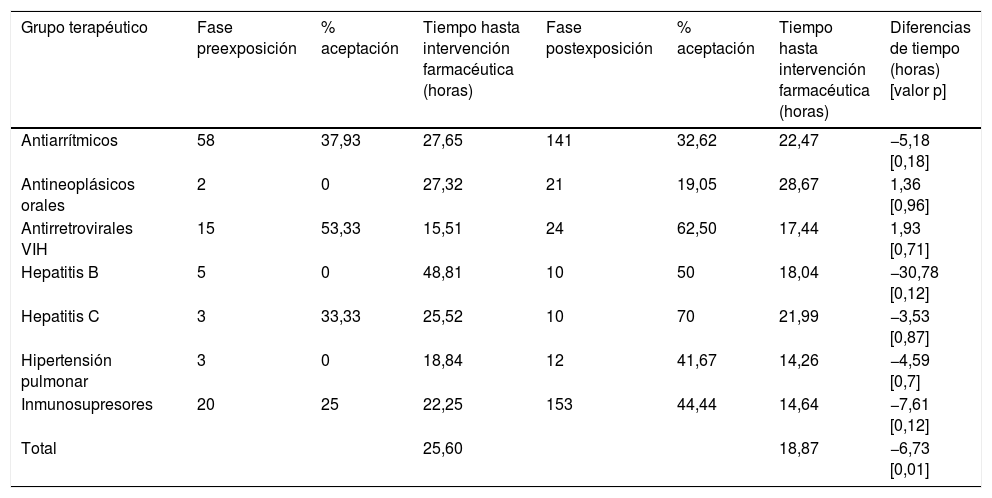Los errores de medicación son el evento adverso más frecuente de la asistencia sanitaria. La validación farmacéutica (VF) busca reducirlos. Los objetivos fueron evaluar el impacto de la implementación de una mejora de la calidad mediante una herramienta de priorización automática de la validación (HPAV) de fármacos de alta relevancia clínica (FARC) en pacientes hospitalizados en el tiempo hasta la intervención farmacéutica (IF), y en el número de errores de medicación detectados.
Material y métodosEstudio retrospectivo-observacional unicéntrico de dos fases. Fase preexposición (F-Pre): VF de camas con dispensación en dosis unitaria (octubre-2015/febrero-2016). Fase postexposición (F-Post): VF utilizando una HPAV de FARC en camas de hospitalización (octubre-2016/febrero-2017).
Se seleccionaron los FARC del listado de fármacos de alto riesgo del Institute for Safe Medication Practices. Los datos se obtuvieron del registro de IF (Access®) y de la prescripción electrónica. Las variables recogidas fueron: edad y sexo de los pacientes, características del fármaco prescrito, tiempo hasta IF. Se compararon los resultados de ambas fases (pre- y postexposición).
ResultadosSe analizaron 477 IF en 404 pacientes, con una edad media de 65,9±19,5 años (53,22% mujeres). El tiempo medio hasta IF fue de 25,6±24,72h en la F-Pre y 18,87±20,44h en la F-Post (p=0,01). En la F-Pre se realizaron 106 IF (35,85% prevención de reacciones adversas) frente a 371 IF (39,62% conciliación de la medicación) en la F-Post.
ConclusionesLa herramienta de priorización automática de la validación de fármacos permitió detectar e intervenir un mayor número de errores de medicación en los pacientes hospitalizados. Además, se pudo reducir significativamente el tiempo hasta la IF.
Medication errors are the most common adverse events in healthcare. Pharmaceutical validation (PV) seeks to reduce them. The aims of this study were to assess the impact of the introduction of an automated tool for the validation (VPAT) of the high clinical relevance drugs prescription (HCRD) over time of pharmaceutical intervention (PI), and to quantify the number of medication errors detected before and after its implementation.
Material and methodsA two phase retrospective-observational single centre study was designed. A pre-intervention phase (Pre-P): PV of beds with Unit Dose Dispensing (October 2015 - February 2016), was followed by a post-intervention phase (Post-P): PV using a VPAT of HCRD in hospital patients (October 2016 - February 2017).
HCRD were selected from the list of high-risk drugs of Institute for Safe Medication Practices. The data was obtained from the PI record (Access®) and the computerised prescription. The variables collected were: age and gender of the patients included, data of drugs prescription, and time to PI.
ResultsA total of 477 PI were analysed in 404 patients, with a mean age of 65.9±19.5 years (53.22% women). The mean time up to PI was 25.6±24.72h in the Pre-P, and 18.87±20.44h in the Post-P (P=0.01). In Pre-P, 106 PI were performed (35.85% prevention of adverse reactions) compared to 371 PI (39.62% medication reconciliation) in Post-P.
ConclusionsThe VPAT enabled a greater number of medication errors to be detected and intervened in hospitalised patients, with a significantly reduced time to PI.









